This article was medically reviewed by Annette Lee, MD. Dr. Lee is a Reproductive Endocrinologist and Medical Director at RADfertility in Newark, Delaware. She has over 17 years of experience with IVF and is double board certified in Obstetrics & Gynecology. She has received Castle Connolly’s Regional Top Doctor Award for five years and Vitals.com Patient Choice Award for five years as well. She completed her medical degree at the Drexel University School of Medicine.
There are 14 references cited in this article, which can be found at the bottom of the page.
wikiHow marks an article as reader-approved once it receives enough positive feedback. In this case, several readers have written to tell us that this article was helpful to them, earning it our reader-approved status.
This article has been viewed 1,022,182 times.
Research shows that knowing when you're ovulating can help you get pregnant since it's the only time of the month when you can conceive. Ovulation is when your ovary releases a mature egg, which can only be fertilized in the 24 to 48 hours after its release.[1] Experts agree that ovulation generally occurs in the 10 to 16 days before you start your period, but every woman's body is different.[2] When calculating your ovulation, track your period over several cycles and use several methods so your results are more reliable.
Choose a Method
- Calendar: Inaccurate estimate, but helps you track other methods.
- Cervical mucus: An important factor to understand, but requires tracking daily for at least a couple months.[3]
- Basal Temperature: Usually paired with cervical mucus method, helping you discover ovulation pattern.[4]
- Ovulation Test: Convenient but expensive, especially if you have an irregular cycle. Sometimes inaccurate, especially for women over 40.[5]
- Detecting Infertility: Try this if you get irregular results for multiple months from the cervical mucus, basal temperature, or ovulation test methods.
Steps
The Calendar Method
-
1Track your menstrual cycle alongside other methods. This is not the most accurate method, but it's an easy, useful step to take while tracking other data.[6] Purchase or create a calendar to begin keeping track of your monthly menstrual cycles. Circle the first day of your cycle, which is the day you start your period. Keep track of the duration of the cycle, which typically averages 28 days.[7]
- Record the number of days in each cycle, including the day you start your period. The last day of each cycle is the day before your next period starts.
- Keep tracking your cycle this way for eight to twelve cycles. The more cycles you have to reference, the more accurate the calendar method will be.
-
2Make a chart of the cycle durations. Once you have at least eight cycles recorded, you can turn the data into a chart. List the day of the month your period began in one column, and the number of days in that cycle in a second column.[8]
- Alternatively, you can use an online ovulation calculator such as the WebMD Ovulation Calculator. Make sure all of the information described below is included in the calculation, or it may be a less effective prediction.
Advertisement -
3Use your chart to predict the fertile period in your current cycle. It’s difficult to pinpoint the exact day you’ll ovulate using only a calendar. Instead, a calendar is useful for predicting the range of days during which you will be fertile, which can be a different length for each woman, as described below:[9]
- Predict the first fertile day in your current cycle by finding the shortest cycle in your chart. Subtract eighteen from the total number of days in that cycle to find your first fertile day, meaning the first day in your cycle when pregnancy could occur. For example, if your shortest cycle lasted 26 days, your first fertile day would be the 8th day in each cycle (26 - 18 = 8), counting the day you began your period as day one.
- Predict the last fertile day in your current cycle by finding the longest cycle in your chart. Subtract eleven days from the total number of days to find the last fertile day in your cycle. For example, if your longest cycle lasted 31 days, your last potentially fertile day in each cycle would be the 20th day in the cycle (31 - 11 = 20).
- Note that the more regular your cycle duration is, the more effective this method will be.[10]
The Cervical Mucus Method
-
1Understand the role of cervical mucus. Cervical mucus, a protective substance on the cervix, changes at different points in your cycle. Your body produces more mucus right around the time of ovulation to help facilitate the fertilization of the egg. Once you get to know your pattern well, it’s possible to use it to predict the day you will ovulate.
-
2Chart your mucus pattern. To learn how to check your mucus, see How to Check Cervical Mucus. Check your mucus every day after your period ends, and note the distinct changes that take place over the course of your cycle. Keep track of the changes on a calendar.
- Chart the days when you have your period, dry days, and days when your mucus is tacky, sticky, slippery, and wet.
- Note changes in color and smell in addition to texture. Note whether the mucus is cloudy or clear.
- Keep as thorough a record as possible, especially in the first few months when you’re still getting used to this method.
- Breastfeeding, infections, certain drugs, and other circumstances can affect the cervical mucus, so be sure to note these factors as well.
-
3Interpret your mucus pattern to determine the day of ovulation. The day of ovulation is usually the day when cervical mucus is most wet and slippery. In the days that follow that peak, especially when the cervix is dry again, fertility is at its lowest.[11]
Tracking Basal Temperature
-
1Buy a basal temperature thermometer. Right before ovulation is the woman’s most fertile time. The body temperature rises slightly right after the woman has ovulated, then remains elevated for the remainder of the cycle, until your next period. You are most fertile during the days in your cycle directly before the temperature rise. Because the incremental temperature change from day to day is so small, regular thermometers will not provide accurate results.[12] Basal temperature thermometers are digital thermometers available at drugstores.[13]
- The most accurate readings are taken in the vagina or rectum, but there are also basal temperature thermometers designed to take readings in the mouth. Stick with the same method during the entire process, and try to measure at the same depth and angle each time.
-
2Take your temperature daily. It’s important to take your temperature at the same time every day, since it fluctuates throughout the day. Ideally, take it first thing in the morning, after at least five hours of sleep and before getting out of bed. Record your temperature within 1/10 of a degree. Use a dot or other symbol on your chart to mark days when other factors may alter the reading, including illness, restless sleep, and fever reduction medicines such as aspirin, Tylenol, and Motrin.[14]
- The average woman’s body temperature is 96–98ºF (35.6–36.7ºC) before ovulation, and 97–99ºF (36.1–37.2ºC) after ovulation. If you get results significantly outside this range, consult the thermometer instructions to make sure you are using it correctly.
-
3Chart your temperature. Record your daily result on a temperature chart that allows you to create a graph, tracking your temperature changes over time. See Baby Center Sample Chart for a sample Basal Temperature chart.
-
4Interpret your temperature pattern. Over the course of several months, notice the day when your temperature goes up. Most likely, ovulation has already occurred at this point, so your most fertile time is right before that. With enough data, you’ll know which days of your cycle you are most likely to ovulate.[15]
Taking an Ovulation Test
-
1Purchase an ovulation test. Sold in drugstores, ovulation testing kits detect the amount of luteinizing hormone (LH) in your urine, which increases one to two days before ovulation. Similar to over-the-counter pregnancy tests, these are digital devices with a testing stick to be held under your urine stream.
- There is another type of testing kit, using which you can test your dried saliva under a microscope for "fern" patterns that sometimes indicate a rise in estrogen levels in the few days leading up to ovulation.[16] This is less reliable than the LH test, especially if you have poor eyesight.
-
2Moderate your water intake in the hours before the test. Very concentrated or very dilute urine throws off the results of this test. For best results, avoid caffeine and alcohol on the day of the test, avoid dehydration or excessive water consumption, and wait until your bladder is full.[17]
-
3Interpret the test. Urinate on the stick and wait for a new line to appear in the viewing window. A line that is about as dark as the existing control line means you are probably ovulating. A faint line is not a reliable indicator.[18]
- Ovulation tests accurately predict the level of LH in urine, but the surge in LH only lasts about 24–48 hours, giving you a short window to detect it. Using multiple methods to track ovulation is recommended.
- Some tests may work slightly differently, so check the instructions. For example, you may need to urinate into a cup and dip the test into it, or the fertility symbol may show up as a smiley face instead of a line.[19]
-
4Repeat as necessary. Test yourself daily during the most likely parts of your cycle, as described in the calendar section. If you have missed your ovulation in previous cycles and can afford additional tests, consider taking an ovulation test twice daily.
Detecting Infertility
-
1Visit a doctor. An OB/GYN or a reproductive endocrinologist can perform tests that are more accurate than home methods.[20] These may include a blood test to measure levels of progesterone and other hormones, or tests to detect abnormalities in thyroid function or prolactin levels, if your doctor thinks these are likely. An ultrasound test can be used to detect structural abnormalities in the reproductive tract that could be affecting ovulation.[21]
-
2Have your sexual partner tested as well. Men can also be tested for infertility. This typically begins by testing a sperm cycle, and may continue to an ultrasound exam to detect possible issues in the male reproductive system.[22]
-
3Ask about treatment. If a doctor does suspect you are infertile due to anovulation (lack of ovulation), she may recommend one of a variety of drugs, depending on your exact condition. Do not assume that lack of conception is due to lack of ovulation without an official diagnosis, as there are many other possible causes. Your doctor should also examine the possibilities of blocked fallopian tubes, sperm-related problems, uterine or egg implantation problems, and age-related decline in egg quality.[23]
Sample Ovulation Charts
Warnings
- Tracking your ovulation provides no protection against sexually transmitted infections.⧼thumbs_response⧽
- Tracking your ovulation is not a reliable form of birth control. It is not possible to predict your ovulation with complete certainty, and sperm can survive for up to seven days after sex.⧼thumbs_response⧽
References
- ↑ https://medlineplus.gov/ency/article/007015.htm
- ↑ https://www.nhs.uk/common-health-questions/womens-health/how-can-i-tell-when-i-am-ovulating/
- ↑ https://www.plannedparenthood.org/learn/birth-control/fertility-awareness/whats-cervical-mucus-method-fams
- ↑ https://www.plannedparenthood.org/learn/birth-control/fertility-awareness/whats-temperature-method-fams
- ↑ https://medlineplus.gov/ency/article/007062.htm
- ↑ https://www.plannedparenthood.org/learn/birth-control/fertility-awareness/whats-calendar-method-fams
- ↑ https://www.womenshealth.gov/ovulation-calculator
- ↑ https://www.plannedparenthood.org/learn/birth-control/fertility-awareness/whats-calendar-method-fams
- ↑ https://www.plannedparenthood.org/learn/birth-control/fertility-awareness/whats-calendar-method-fams
- ↑ http://www.medscape.com/viewarticle/589936_4
- ↑ https://www.plannedparenthood.org/learn/birth-control/fertility-awareness/whats-cervical-mucus-method-fams
- ↑ https://my.clevelandclinic.org/health/treatments/21065-basal-body-temperature
- ↑ https://www.plannedparenthood.org/learn/birth-control/fertility-awareness/whats-temperature-method-fams
- ↑ https://my.clevelandclinic.org/health/treatments/21065-basal-body-temperature
- ↑ https://www.plannedparenthood.org/learn/birth-control/fertility-awareness/whats-temperature-method-fams
- ↑ https://www.fda.gov/medical-devices/home-use-tests/ovulation-saliva-test
- ↑ https://medlineplus.gov/ency/article/007062.htm
- ↑ https://medlineplus.gov/ency/article/007062.htm
- ↑ http://www.babycentre.co.uk/a561822/how-to-use-ovulation-predictor-kits
- ↑ http://www.ncbi.nlm.nih.gov/pubmed/9288330
- ↑ https://www.acog.org/patient-resources/faqs/gynecologic-problems/evaluating-infertility
- ↑ https://www.acog.org/patient-resources/faqs/gynecologic-problems/evaluating-infertility
- ↑ https://www.nhs.uk/conditions/infertility/treatment/
About This Article
To calculate your ovulation by tracking your cervical mucus, keep a calendar and track your period and the length of time between each period for 8-12 months. Once you have at least 8 months charted, subtract 18 from the number of days in your shortest period to get your first fertile day in each cycle. Next, subtract 11 from your longest cycle to find the last fertile day in your cycle. Use this range to predict when ovulation occurs. To learn how to calculate ovulation by tracking your basal temperature, read on!
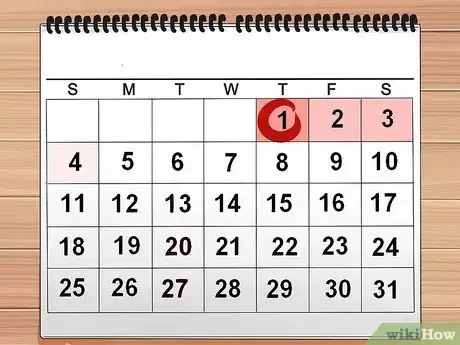
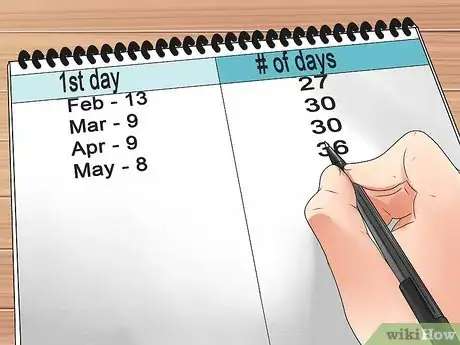
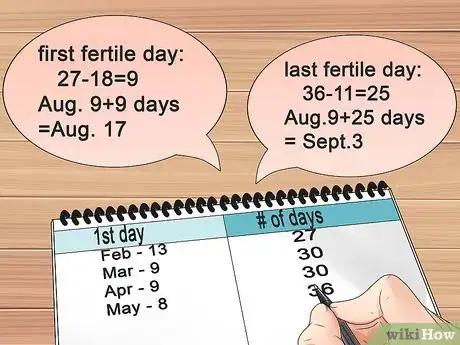


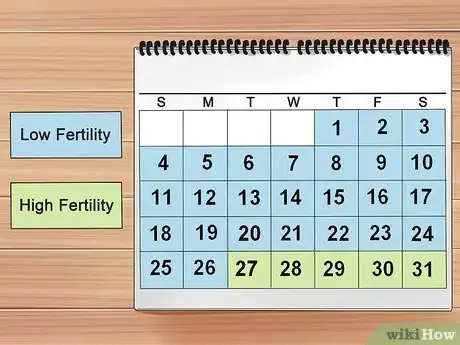

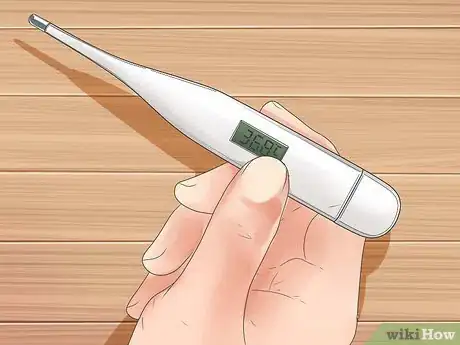



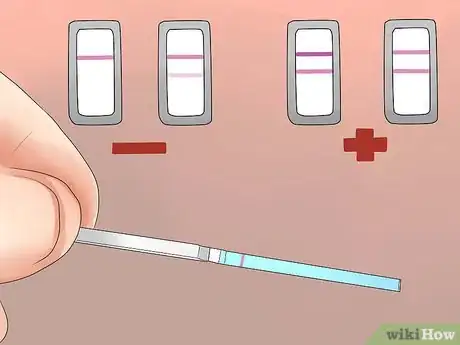




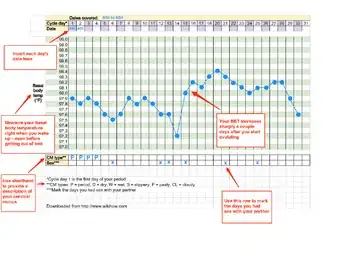
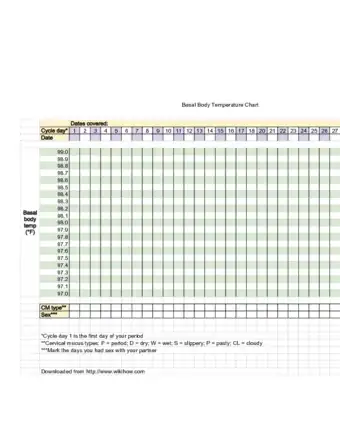




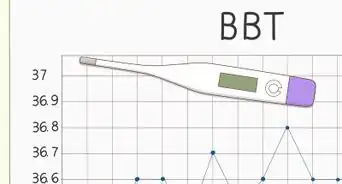




























































Medical Disclaimer
The content of this article is not intended to be a substitute for professional medical advice, examination, diagnosis, or treatment. You should always contact your doctor or other qualified healthcare professional before starting, changing, or stopping any kind of health treatment.
Read More...